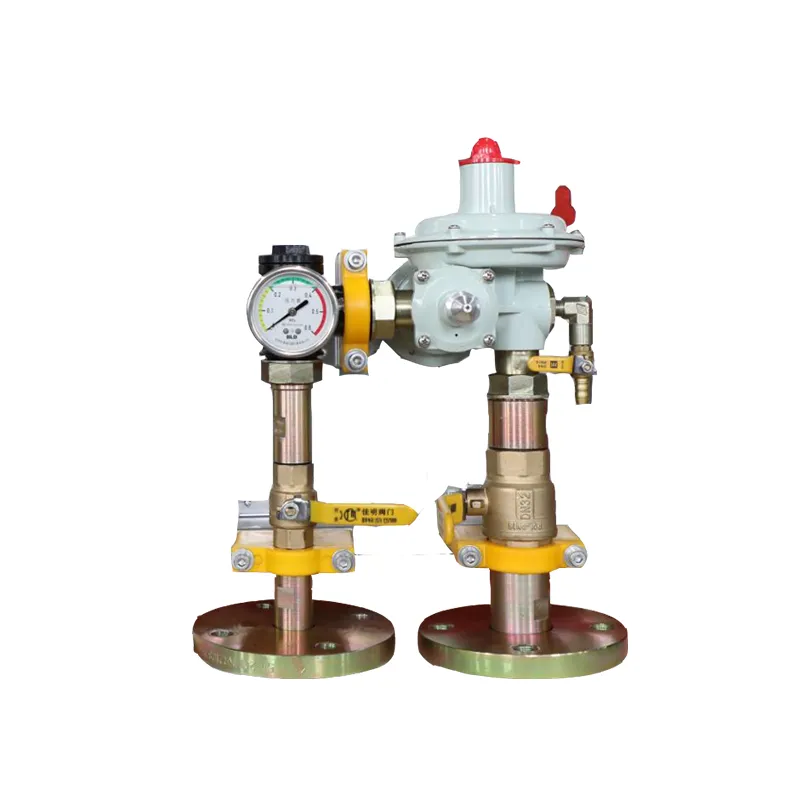
Dec . 11, 2024 09:35
Back to list
Natural Gas Pressure Regulation Solutions for Safe and Efficient Gas Distribution
Understanding Natural Gas Pressure Reducers
Natural gas is a critical energy source that powers homes, industries, and vehicles across the globe. However, the delivery of natural gas requires careful management of pressure to ensure it is safe and efficient. This is where natural gas pressure reducers, also known as pressure regulators, come into play. These devices are essential in controlling the pressure of natural gas as it moves from high-pressure pipelines to lower-pressure systems within buildings or industrial facilities.
The Role of Pressure Reducers
Pressure reducers serve a crucial function in the natural gas distribution network. When natural gas is transported via pipelines, it travels at high pressure, which is necessary for moving the gas over long distances. However, when the gas reaches its destination, the pressure must be reduced to a level that is safe for use in appliances and machinery. This is where pressure reducers come in, playing a vital role in ensuring that the natural gas is delivered at the correct pressure for safe combustion.
How Pressure Reducers Work
Natural gas pressure reducers operate using various mechanisms, but the fundamental principle is the same across different designs. When high-pressure gas enters the reducer, it interacts with a diaphragm, which moves in response to the pressure change. This movement adjusts a valve that controls the flow of gas, reducing its pressure before it exits the regulator.
There are two main types of pressure regulators first-stage and second-stage reducers. First-stage regulators reduce the high pressure from the main gas line to an intermediate pressure level, while second-stage regulators further decrease this intermediate pressure to a level suitable for residential or industrial use.
Importance of Pressure Management
The management of gas pressure is not just about operational efficiency; it also raises significant safety concerns. If the gas pressure is too high, it can lead to leaks, which pose risks of explosions and fires. Conversely, if the pressure is too low, it may result in inadequate gas supply, causing appliances to malfunction or not operate at all. Therefore, maintaining the right pressure through reliable pressure reducers is essential for safety and performance.
natural gas pressure reducer

Applications in Various Settings
Natural gas pressure reducers are used in a wide range of settings. In residential applications, they are typically installed near the gas meter, where they ensure that gas flowing into a home is at a safe and usable pressure for appliances such as stoves, water heaters, and furnaces. In industrial settings, pressure reducers are critical for equipment that requires precise pressure control for optimal operation, such as boilers and gas turbines.
Furthermore, in commercial establishments, restaurants, and other businesses that rely heavily on gas-powered equipment, proper regulation of gas pressure is vital for maintaining operational efficiency.
Maintenance and Safety Considerations
Regular maintenance of natural gas pressure reducers is essential to ensure their proper functioning. Accumulation of dirt, dust, or corrosion can affect the performance and reliability of these devices. It's advisable for users to have their pressure reducers checked at regular intervals by qualified professionals to prevent any safety hazards.
Moreover, understanding the signs of potential issues with a pressure reducer is important for safety. Symptoms such as inconsistent gas pressure, gas odor, or leaks should be addressed immediately by a gas service professional.
Conclusion
Natural gas pressure reducers are an integral part of the gas supply chain, ensuring that natural gas is delivered safely and efficiently to end-users. By understanding how these devices work, their importance in gas pressure management, and the need for regular maintenance, individuals and businesses can contribute to a safer and more reliable natural gas utilization. As the energy landscape continues to evolve, the role of pressure reducers will remain vital in the responsible and efficient use of natural gas.
Latest news
-
Safety Valve Spring-Loaded Design Overpressure ProtectionNewsJul.25,2025
-
Precision Voltage Regulator AC5 Accuracy Grade PerformanceNewsJul.25,2025
-
Natural Gas Pressure Regulating Skid Industrial Pipeline ApplicationsNewsJul.25,2025
-
Natural Gas Filter Stainless Steel Mesh Element DesignNewsJul.25,2025
-
Gas Pressure Regulator Valve Direct-Acting Spring-Loaded DesignNewsJul.25,2025
-
Decompression Equipment Multi-Stage Heat Exchange System DesignNewsJul.25,2025

